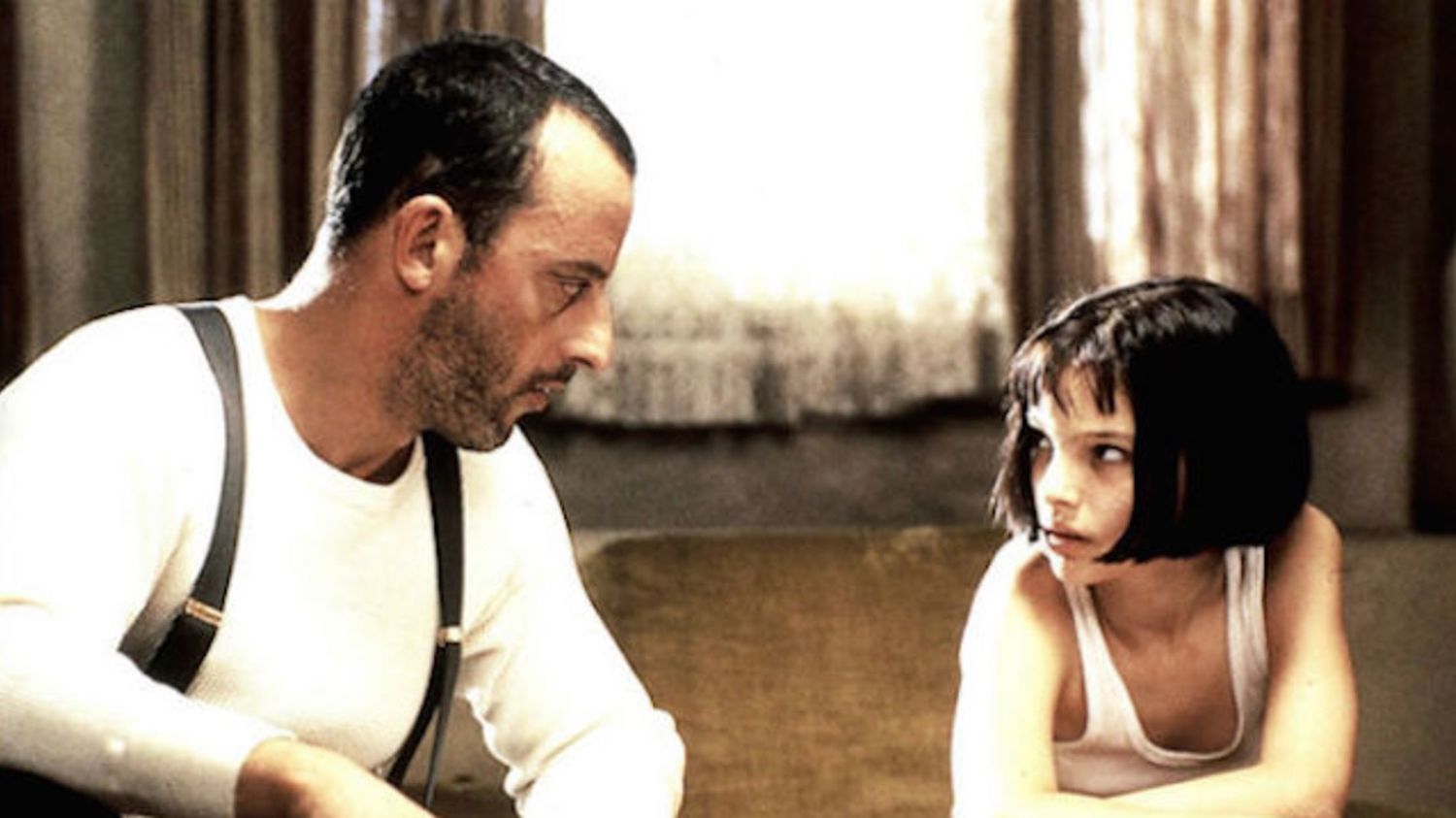'The Professional' still offers one of the 90s' best battles between good and evil
Newly released on 4K UHD, 'The Professional' remains one of the 1990s' most thrilling, stylish and emotionally affecting action films.

Luc Besson’s The Professional was a mind-blower back in 1994, an invigorating combination of breathless cinematic style and bravura storytelling — the kind of adventuresome technique and flashy confidence that oozes off the screen. It was also only a moderate hit at the time, earning $45 million worldwide, a significant portion of that in Besson’s native France. But unlike many others ‘90s movies that thrilled audiences at the time but fell apart upon subsequent viewings, the director’s American debut possesses virtues that have not only aged gracefully over the past 25 years, but appreciated in depth and complexity. Newly released on 4K UHD, The Professional offers another chance for the world to witness its charms as its battle between good and evil comes home again, now in ever greater detail.
At the moment that Besson’s film arrived on American shores, it was not the first international import to make waves commercially, and in particular as an action film. Not only had Besson’s previous film La Femme Nikita wowed viewers in a limited worldwide release, but it was remade in English as Point of No Return in 1993 by director John Badham. During that same period, John Woo’s The Killer was released in the United States on VHS in 1992, introducing the largely unseen world of Hong Kong cinema to action junkies whose previous experience with Asian cinema was through martial arts movies. These were films where “more was more,” but their escalating absurdities were leavened by an unerring sense of filmmaking bravado and style. People were so thrilled to see something new and unexpected in a genre they were familiar with that they didn’t worry if they swung melodramatically through multiple tones, or always made sense.
But while the director of Saturday Night Fever was translating Besson’s previous work for American audiences, Besson himself was developing a project that would piggyback on its ideas to create a new vision. The result was The Professional, the story of a very skilled but illiterate hit man who opens his front door to an orphaned girl, changing his lookout, and life, forever. Besson hired Jean Reno once again to play a taciturn assassin — “maybe the American cousin” of his La Femme Nikita character, the filmmaker said — while pairing him with a revelatory newcomer, Natalie Portman, whose energy and vitality could turn anyone’s heart. If the relationship seemed outwardly Lolita-ish or inappropriate, Besson’s story would elide those comparisons by tackling Leon and young Mathilda’s complicated dynamic from precisely the point of view that the film’s unabashed love story should — namely, hers. Or more precisely, it would properly show how Leon’s activities as a hired killer were an armor and a band-aid for a soul that never fully grew up.
Looking at the film now, that seems more clear than ever; not even Besson’s Gallic background could have protected the film from being critiqued for its depiction of their relationship if there was even a hint of grown-up attraction. But it’s precisely this dynamic — the juxtaposition of its dark, adult elements, the seriousness of its stakes, with the purity of their connection and the childlike repairs they make in one another — that enables the deeper substance of the story to endure. Stylistically, Besson’s film marked an evolution from his previous work and echoed the nimble, confident staging of John Woo and his Hong Kong counterparts. Narratively, it set a path that allowed these characters to transcend, and eventually, to precede an even cheekier, more delightfully earnest fairy tale in The Fifth Element, where love literally saves the universe.
To that end, The Professional is a tapestry of striking contrasts. As Leon, Reno is introverted and slight, hiding inside his peacoat and behind sunglasses that protect him from engaging with world like a shy teenager — which essentially he is. He drinks only milk. He has a pet plant, and his only friend is a pig-shaped potholder. (We learn in passing that he came to American to escape trouble with a woman, which says plenty about both his history, and his heart.) Though she’s abused and grieving, Mathilda is full of life, resilient, eager to let in the world’s sunshine and meet it beam for beam. Consequently, their emotional ages are about the same, 12. Her casual compliments hint at a sophistication she doesn’t actually possess, but the fact that he sputters his milk whenever she gives one is as much a byproduct of his discomfort at the attention — that shy teenager, getting thrust into the spotlight — as the recognition that they’re at ages suitable only for a parent and child, if he had the capacity to exert paternal authority. Meanwhile, he still gets his payments from his mysterious confidante and father figure “Old Tony” (Danny Aiello), who parcels out the cash like it’s Leon’s allowance.
On the opposite side of the spectrum, there’s Norman Stansfield, played by Gary Oldman as both the greatest and most terrifying villain you’ve ever seen. Suffice it to say that there’s nothing subtle about his performance, but the character is unrepentant evil, emboldened with the authority of the DEA (and his fellow officers’ quaking complicity) behind him. But the thing about Oldman in this movie is that is truly needs him for the love story between Leon and Mathilda to work. What the both of them are against is the ugly cruelty of the adult world, which Stansfield embodies. An understated opponent — a person who would not exuberantly march into an apartment at midday and kill a man, his bathing wife, and two children without blinking an eye or pausing to consider the moral ramifications of his behavior — would not suffice. Even if Leon’s job entails killing, Stansfield’s violence is more graphic, and made crueler by his position as an authority figure whose social role is ostensibly to do good.
As with previous home video versions, the new 4K release features both the film’s theatrical cut and what Besson does not call the director’s cut but simply “the longer version,” featuring some 25 additional minutes of footage — including scenes where, alternately, Mathilda assists Leon with his assignments, and she becomes endangered by that participation. While that stuff adds fun color to the plot, it undermines the emotional integrity, and certainly the momentum of the story. This movie is not strictly about a hit man who teams up with a little girl; it’s about a hit man who discovers his humanity when he rescues a little girl, in so doing deciding to open his life and his heart to feelings he’d closed off. The angularity of their inherent goodness complements Stansfield’s absolute evil, leading to a forceful, redemptive climax.
The latest updates, reviews and unmissable series to watch and more!
Both this and The Fifth Element are films that demand to be revisited every couple of years, but if The Professional holds up, or holds an edge over Besson’s childhood sci-fi fantasies brought to life, it’s because the film balances the bitter and the sweet, the heightened and the human better. It has also never looked better, and it was an extremely handsome film to begin with. But whether you’re upgrading your collection or watching this undervalued ‘90s action film for the very first time, the reason that The Professional continues to resonate so strongly is because it offers viewers a unique ability to experience Leon and Mathilda’s world through their hopeful eyes, and reminds us to look at ours the same way.
Todd Gilchrist is a Los Angeles-based film critic and entertainment journalist with more than 20 years’ experience for dozens of print and online outlets, including Variety, The Hollywood Reporter, Entertainment Weekly and Fangoria. An obsessive soundtrack collector, sneaker aficionado and member of the Los Angeles Film Critics Association, Todd currently lives in Silverlake, California with his amazing wife Julie, two cats Beatrix and Biscuit, and several thousand books, vinyl records and Blu-rays.


